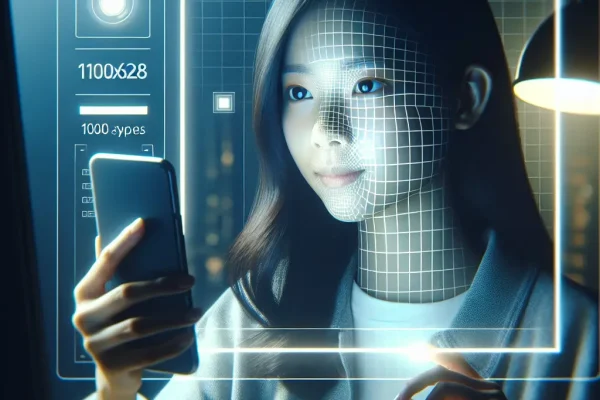Did you know you’re probably using artificial intelligence every single day—without even realizing it? According to the latest Pew Research Center data, a staggering 67% of Americans use AI-powered services or products weekly, yet more than two-thirds are unaware that behind-the-scenes intelligence is subtly influencing their habits, entertainment, and even their opinions (Pew Research Center, 2024). At a moment when technology feels omnipresent, the unknowing use of artificial intelligence has become the new normal—but its hidden influence is raising urgent questions. If AI is woven so seamlessly into our apps and devices that most people don’t even notice, what invisible changes is it making to our daily life and future society?
Unconscious AI adoption isn’t just a tech buzzword—it’s a stealth revolution affecting our choices, privacy, and even democracy. In this deep dive, we’ll reveal how hidden AI is already everywhere, why awareness matters, and what consequences may emerge if we stay in the dark.
The Problem: How AI Became Invisible in Everyday Life
Technologies Powered by AI That People Use Unknowingly
AI is no longer limited to sci-fi movies or specialized labs; it has silently infiltrated the daily routines of billions. From predictive text in messaging apps and smart email categorization to AI-curated playlists on Spotify and Instagram’s algorithmic feeds, hidden AI in consumer apps shapes our digital experiences. Even seemingly ordinary products—like Google Maps’ real-time traffic rerouting or your phone’s portrait mode—depend on neural networks.
- Voice assistants (Siri, Google Assistant, Alexa): Leverage powerful language models to interpret requests
- Social media feeds: Recommend content using deep learning algorithms
- Email spam filters: Use pattern detection to combat junk mail
- Banking apps: Deploy AI for fraud detection and credit scoring
- Streaming platforms (Netflix, YouTube): Suggest shows based on machine-learned preferences
Yet, as Financial Times reports, “the majority of consumers are shockingly unaware” of how such services rely on complex artificial intelligence systems (FT, June 2024). So, Do people realize when they are using AI? The answer is: rarely.
Why Are People Less Aware of AI in Popular Applications?
There are several reasons for this lack of awareness:
- Seamless integration: AI tools are embedded within apps in ways that appear natural or invisible.
- Intentional vagueness: Companies often market AI as just ‘smart features’ or avoid mentioning it altogether to not scare away users.
- Technical complexity: For most consumers, the mechanics of AI remain opaque and intimidating.
- UI/UX priorities: Designers focus on frictionless experiences, hiding the complexity from the user.
As The Verge recently concluded, “AI tech has become so commonplace and seamless, it’s almost as if it’s not there at all” (The Verge, June 2024).
Why It Matters: The Profound and Unseen Human Impact of Unconscious AI Adoption
The less we recognize the pervasive influence of AI, the greater the impact on our autonomy, perceptions, and well-being. Here’s why unconscious AI adoption should command urgent attention—from policymakers, technologists, and everyday users:
- Choice Architecture: AI-curated feeds and recommendations nudge us towards certain music, news, and ads, subtly shaping taste and worldviews.
- Economic Consequences: Automated AI features replace jobs in content moderation, retail, customer support, and beyond—often with zero consumer awareness.
- Environmental Impact: AI systems, especially large language models, consume massive energy, but most users have no idea that their daily app use leaves an environmental footprint (see suggested chart below).
- Health & Well-being: Recommendation algorithms can reinforce addictive scrolling or unhealthy behaviors—often without transparency or oversight.
- Privacy and Data: Uninformed users hand over personal information to AI engines, risking exposure to data mishandling.
The upshot? When we don’t know we’re interacting with AI, our power to make informed choices—and even to consent—diminishes.
Expert Insights & Key Data: How AI’s Hidden Influence Unfolds
Stat #1: “Fully 66% of US adults say they’ve used an AI tool in the past month, but only 30% could name a specific app using AI.” – Pew Research Center, June 10, 2024
Quote: “When convenience trumps understanding, AI becomes a silent partner in decision-making—one most people never see or question.” – Financial Times, June 9, 2024
Stat #2: “Just 18% of global consumers say they feel confident they can identify when an app is powered by AI.” – FT survey, 2024
Stat #3: “Four in five (81%) of smartphone users say they had no idea their phone camera uses AI to enhance images automatically.” – The Verge, June 8, 2024
These findings underscore a genuine gap between technology’s reach and public knowledge. The consequences of not knowing about AI range from diminished individual agency to vulnerability to bias and manipulation.
The Future Outlook: Risks, Opportunities, and the Path Forward
Over the next 1–5 years, the proliferation of AI in consumer tech is on track to accelerate—prompting critical questions for society:
Risks of Deeper Unconscious AI Adoption
- Amplified Filter Bubbles: Personalized AI feeds may reinforce echo chambers, exacerbating polarization.
- Invisible Manipulation: Marketing and political campaigns are already leveraging AI-driven targeting that’s undetectable to the average citizen.
- Growing Consent Gap: The less users realize what’s happening, the harder it is to give (or withhold) meaningful consent.
- Algorithmic Bias: Hidden biases in AI models could worsen discrimination across hiring, lending, or healthcare.
Opportunities and Solutions
- AI Transparency Labels: Requiring apps to clearly disclose when and how AI is involved in decisions.
- AI Literacy Initiatives: Public campaigns could boost understanding of where and how AI operates.
- Stronger Regulation: Mandates for ethical, explainable, and auditable AI in consumer-facing apps.
As awareness grows, so too does the demand for autonomy and accountability—pushing companies to adopt more responsible standards or risk consumer backlash (Pew Research Center).
Infographic/Chart Suggestion
Infographic Idea: “Hidden AI vs. Energy Consumption—Stacked bar chart showing average weekly energy use of AI-powered features in smartphones vs. annual Bitcoin mining energy use.”
Case Study: The Hidden AI You Interact With Daily
| Everyday Activity | Unseen AI Technology | Human Impact |
|---|---|---|
| Commuting by GPS | AI-powered traffic prediction | Optimizes routes, shapes urban flow |
| Browsing social media | Algorithmic feeds, facial recognition | Filters content, influences mood and beliefs |
| Shopping online | Personalized search & recommendation AI | Shapes spending, exposes to bias |
| Photo editing | AI image enhancement | Alters reality, influences social identity |
Related Links
- [External: MIT study on AI trust and transparency]
- [External: NASA—Artificial Intelligence Overview]
- [External: WSJ: AI’s Impact on Consumer Products]
FAQs on Unconscious AI Adoption
- What does unconscious AI adoption mean?
- It refers to people regularly using AI-powered technologies without realizing AI is involved. For example, smart email filters and recommendation engines work quietly behind the scenes.
- Why are people less aware of AI in popular apps?
- AI is often deeply integrated, designed to be invisible. Most companies don’t highlight their AI features, and their effects seem like natural app improvements rather than the result of intelligent algorithms.
- What are the consequences of not knowing about AI?
- Lack of awareness can lead to diminished privacy, less control over personal data, exposure to bias, and manipulation—undermining personal agency and societal trust.
- How does artificial intelligence integrate into everyday technology?
- AI is used in camera apps for facial recognition, smart assistants for scheduling, chatbots for customer service, and even streaming services to suggest content—all seamlessly embedded.
- Do people realize when they are using AI?
- Studies show most users do not realize when an app relies on AI, highlighting a major awareness gap (Pew Research Center, 2024).
Conclusion: The Urgency of Seeing the Unseen
AI’s reach now stretches far beyond the obvious—reshaping choices, behaviors, and society itself invisibly. The rise of unconscious AI adoption presents one of this decade’s most pressing challenges. Closing the knowledge gap means more than mere awareness; it’s about reclaiming human agency, fostering ethical design, and demanding transparency from those who shape our digital future. Let’s bring our algorithms into the light before they quietly reshape our world.


